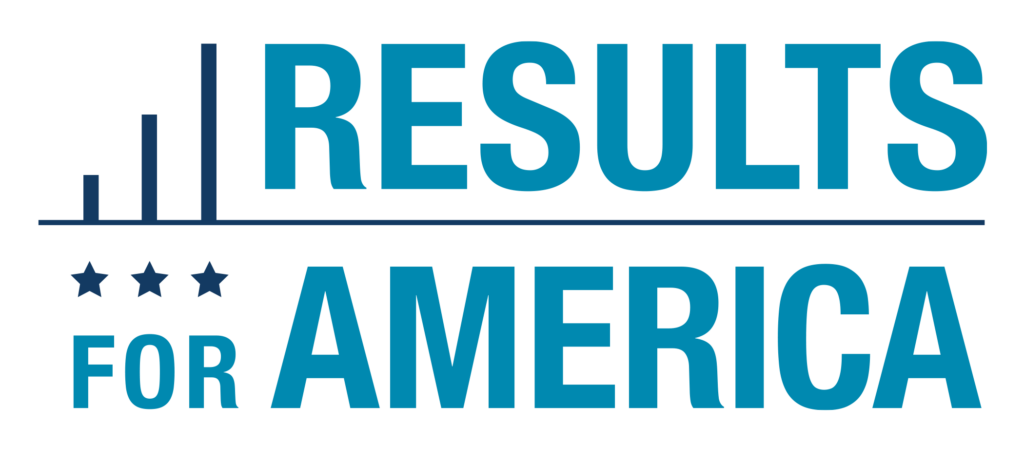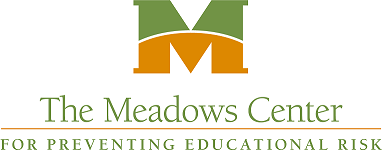ACADEMIC SUPPORTS FOR STUDENTS WITH DISABILITIES
This research brief highlights the challenges schools face in meeting the needs of students with disabilities during COVID-19, emphasizing the legal requirement to provide individualized instruction that ensures appropriate progress. With these students among the most vulnerable to learning loss during remote learning, targeted small-group or one-on-one interventions are identified as the most effective strategy for addressing their needs. Schools must prioritize these interventions over co-teaching models, which have shown limited effectiveness, and ensure special educators focus their efforts on direct student support. Additionally, regular progress monitoring and involving parents in supportive—not primary—roles are essential. Delaying special education evaluations risks exacerbating students’ difficulties over time, making timely intervention crucial for long-term success.
The EdResearch for Action Overview Series summarizes the research on key topics to provide K-12 education decision makers and advocates with an evidence base to ground discussions about how to best serve students. Authors – leading experts from across the field of education research – are charged with highlighting key findings from research that provide concrete, strategic insight on persistent challenges sourced from district and state leaders.
Nathan Jones | National Center for Special Education Research (NCSER)
Sharon Vaughn | University of Texas, Austin
Lynn Fuchs | Vanderbilt University
June, 2020 | Brief No. 2
Expand Download ReportCentral Question
How can schools intervene to reduce learning gaps between students with disabilities and their peers, which have likely widened during school closures?
Key Insights
Breaking Down the Issue
- All current federal guidance indicates that, even during COVID-19 stay-at-home orders, schools still need to provide students with disabilities an education that a) is individualized and b) ensures they make appropriate progress.
- Students with disabilities are one of the student populations likely to have regressed the most during COVID-related distance learning.
- The single most important service schools provide for students with disabilities is additional intervention time devoted to students’ specific areas of need.
Strategies to Consider
- Small-group or one-to-one intervention three to five times per week is a proven way to meet individualized needs.
- Many features of effective academic and behavioral interventions may still be successfully delivered in a distance learning setting.
- Interventions need to be supported by regularly collecting student data, focusing on skills and concepts known to predict academic or behavioral outcomes, and using these data to make instructional decisions.
- Special educators’ time is best used for the delivery of interventions in small groups or one-on-one.
Strategies to Avoid
- Co-teaching, an approach where special educators support students with disabilities in the general education classroom, will likely be insufficient to meet students with disabilities’ current needs.
- Parents and guardians cannot be the primary providers of students’ educational and/or behavioral interventions.
- Postponing evaluations that determine eligibility for special education services will likely lead to more severe student difficulties in the future.
Breaking Down the Issue
All current federal guidance indicates that, even during COVID-19 stay-at-home orders, schools still need to provide students with disabilities an education that a) is individualized and b) ensures they make appropriate progress.
- Under the Individuals with Disabilities Education Act of 2004 (IDEA), schools are required to provide instruction that is specially designed to meet students’ individual needs. The 2017 Supreme Court case of Endrew F. v. Douglas County School District establishes an even stronger legal standard, requiring special education to produce “appropriate progress” for a given student’s needs.
- These legal protections are to remain in place during COVID-related distance learning, according to guidance from the U.S. Department of Education dated March 2020 and updated in May 2020.
- According to the guidance, schools must provide educational opportunities to the general education population and provide students with disabilities all the services laid out in their Individual Education Plans (IEP). As an example of one state’s interpretation of the federal guidance, see this FAQ from Illinois.
- Failure to provide the services required by students’ IEPs during COVID-19 has already resulted in lawsuits brought against Fairfax County (VA) Public Schools, the Pennsylvania Department of Education, and the Hawaii Department of Education.
- If schools do not provide services during a school closure, the IEP (or 504) team may need to include contingency plans to make up for lost skills. New Hampshire, for example, is requiring IEP teams to meet within 30 days of the beginning of the 2020-2021 school year to determine whether students are eligible for compensatory services.
Students with disabilities are one of the student populations likely to have regressed the most during COVID-related distance learning.
- The reduction in the quality of special education services as a result of COVID-19 will likely exacerbate already existing gaps between students with disabilities and their peers.
- For the past 10 years, as shown on NAEP assessments, the performance of students with disabilities has remained flat. Studies also indicate that students with disabilities consistently score well below their peers on annual reading and math assessments.
- According to a May 2020 survey conducted by Parents Together, a parent-focused journalism site, 40% of families of students with disabilities reported receiving no services from schools during school closures and 35% reported little to no remote learning. Only 20% reported receiving the services to which they were entitled.
- Studies conducted before the pandemic suggest that many students with disabilities require additional face-to-face instructional time to make academic progress.
The single most important service schools provide for students with disabilities is additional intervention time devoted to students’ specific areas of need.
- Differentiation or accommodation in the general education context is not a substitute for targeted intervention that allows students with disabilities to make progress that meets their academic and behavioral needs.
- One study of low-performing students in mathematics, including many students with disabilities, used three randomized controlled trials over three consecutive years to document that students receiving specialized intervention in fractions made significantly stronger learning gains than those receiving inclusive mathematics instruction.
- This suggests that, in COVID-related distance and/or hybrid learning, schools should prioritize the delivery of targeted, validated interventions that focus on foundational skills in reading and math or on student behavior and mental health. For a detailed list of these types of interventions, see here or here.
- Interventions commonly require more time, smaller learning groups, or one-on-one instruction, and explicit, structured instruction from well-trained personnel.
- See this practice guide for information on how these components might look in mathematics.
- Effective interventions depend on frequent progress monitoring. Such assessments allow educators to measure whether an intervention is of appropriate duration, quality, and intensity to support student success.
Strategies to Consider
Small-group or one-to-one intervention three to five times per week is a proven way to meet individualized needs.
- Multiple studies in the What Works Clearinghouse provide strong evidence for interventions in reading and mathematics that emphasize explicit, systematic instruction in foundational skills.
- Explicit instruction involves teaching the steps or processes of a skill or strategy, coupled with frequent opportunities for student practice and immediate, specific feedback.
- Effective interventions in behavior commonly feature teaching students socially and behaviorally appropriate skills, drawing on explicit, systematic instruction.
- There is some promising early evidence of the effectiveness of interventions that jointly target academic and socioemotional needs.
- Results from an ongoing study funded by the National Institute of Child Health and Human Development indicate students who received a reading intervention coupled with a brief, five-minute anxiety intervention saw improvements in reading comprehension and decreases in anxiety.
- Guidance on the evidence base of particular intervention programs can be found in the academic intervention and behavioral intervention charts from the National Center on Intensive Intervention (NCII).
Many features of effective academic and behavioral interventions may still be successfully delivered in a distance learning setting.
- NCII and the Center on Positive Behavioral Interventions and Supports have released evidence-based guidelines for supporting students with disabilities through distance learning.
- For example, if students are learning phonemic awareness by blending and segmenting sounds, the teacher can remotely model blending and segmenting with clear explanations, as students practice the skill under teacher supervision and receive in-the-moment feedback. To reduce the time required for synchronous instruction, the modeling of skills and strategies could be recorded prior to instruction and delivered asynchronously.
- The “Check-In, Check-Out (CICO)” procedure – a remote teaching behavior intervention – has also been adapted for distance learning. In CICO, students check in with teachers in the morning to develop daily behavioral goals, receive feedback throughout the day, and then review progress at the end of the day. Such a procedure can be applied at home through web-based conferencing with teachers and support from parents or guardians.
Interventions need to be supported by regularly collecting student data, focusing on skills and concepts known to predict academic or behavioral outcomes, and using these data to make instructional decisions.
- Frequent, systematic data collection has a strong track record as a tool for improving students’ academic and behavioral outcomes.
- The evidence base on various progress monitoring tools can be found on NCII’s academic and behavior progress monitoring tool charts.
- While weekly progress monitoring is the gold standard, under the conditions of distance learning, students may instead be assessed less frequently. A recent study in reading found that intermittent progress monitoring (i.e., conducting three brief assessments in the same sitting once every three weeks) produced results that were similarly accurate as weekly progress monitoring.
- Many progress monitoring tools can be delivered virtually in ways that are reliable and valid.
Special educators’ time is best used for the delivery of interventions in small groups or one- on-one.
- Special educators have the unique skills and training necessary to provide interventions. Other instructional responsibilities, including administering and scoring assessments or attending to paperwork, should be dispersed to paraprofessionals or other available support personnel.
- General educators can support students with disabilities’ academic progress by devoting daily instructional time to explicit instruction in foundational skills and concepts in reading and mathematics.
- To help schools bridge the potential gap between special educators’ available time and students’ needs, there is some evidence that paraprofessionals or tutors can be trained – using structured, high quality curricula – to deliver academic and behavioral interventions with ongoing supervision.
Strategies to Avoid
Co-teaching, an approach where special educators support students with disabilities in the general education classroom, will likely be insufficient to meet students with disabilities’ current needs.
- A 2012 summary of existing meta-analyses reviewed 146 studies of co-teaching; of these studies, only 17 included student outcome data and none supported causal claims that co-teaching improves student achievement.
- A recent study estimated the effect of attending a co-taught class for all students with disabilities across the state of Massachusetts. The study found no overall effect of co-teaching on performance in English Language Arts (ELA) or in Math.
- At the elementary level, there were small, positive effects for students with disabilities in ELA. At the secondary level, both students with disabilities and their general education peers experienced lower test scores in ELA when attending a co-taught classroom.
- Observational research suggests that the predominant form of co-teaching is “one-teach, one-assist,” where the special educator monitors students with disabilities and provides them with individual support. Instead, schools might consider models, such as station teaching, that would more readily support the delivery of interventions in the general education class. If schools elect to use co-teaching for specific students, they should prioritize models where special educators can deliver specialized instruction aligned with students’ IEP goals.
Parents and guardians cannot be the primary providers of students’ educational and/or behavioral interventions.
- Parent or guardian efforts do not replace the instructional time schools must provide to students with disabilities, although with appropriate training and guidance, parents and guardians can play an important support role.
- Parents and guardians frequently do not have the knowledge, skills, and resources required to successfully implement interventions with fidelity.
Postponing evaluations that determine eligibility for special education services will likely lead to more severe student difficulties in the future.
- Evidence from years of special education research suggests that interventions that are shown to be effective for addressing reading challenges among younger students with disabilities are not nearly as impactful when used with older students.
This EdResearch for Action Project brief is a collaboration among:





Funding for this research was provided by the Bill & Melinda Gates Foundation. The findings and conclusions contained within are those of the authors and do not necessarily reflect positions or policies of the foundation.
